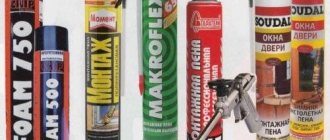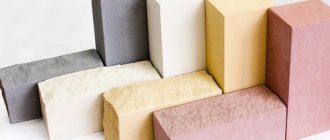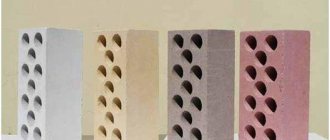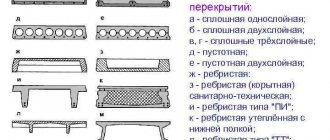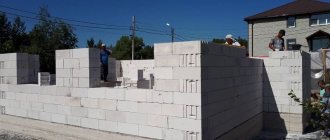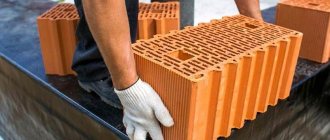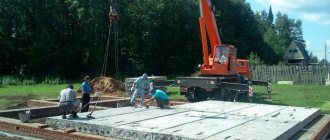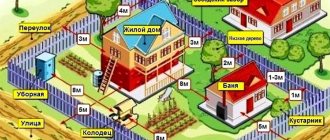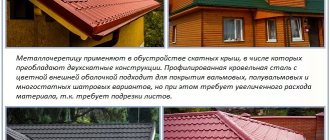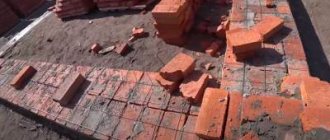What is silicate brick made from? The production of silicate brick is of interest to many entrepreneurs. After all, building materials are not cheap and there is a constant demand for them. Therefore, today we will talk about how sand-lime brick is made.
In production, you need to know the entire chain and it should be said that the right technology is quite important, because without it you cannot get a quality product. Everything can be done with your own hands, but then the production will not be large.
With serial production, you will need to purchase powerful equipment. You can watch the entire technological process in the video in this article.
Sand-lime brick: what is it or a little history
Brick as a building material has been used by man for many centuries, but it was a material made from clay.
The history of silicate goes back a little more than a century: it even has an exact date of birth - October 5, 1880, and a place - Germany.
To be fair, it should be noted that experiments with pitch and lime were carried out in many countries, including Russia. And this was not a purely scientific interest, but an urgent need to satisfy the needs of the market, which in an era of rapid industrial growth needed not only large volumes of building materials, but also those with qualitatively new characteristics, while their cost should not be too high.
At first, a mixture consisting of 90% sand, 10% lime and water simply hardened in air, but the quality of such material was unsatisfactory and could not compete with traditional bricks and concrete.
But the use of an autoclave, in which under pressure of an average of 10 atmospheres and a temperature of 180-200 °C, affected the quality characteristics.
In pre-revolutionary Russia, back in the 19th century, the construction of factories for the production of sand-lime brick began, but this material began to gain the greatest popularity only in the 50-60s of the 20th century.
It has not lost its popularity to this day, despite the emergence of a large number of analogues with improved characteristics and special properties.
Pros and cons of sand-lime brick
It is no coincidence that the frost resistance of sand-lime brick is increased with the help of plasticizers. The standard indicator for lime blocks is F50. It is the first in a number of frost resistance brands. There is no point in marking the indicators below, since any concrete corresponds to them.
Having released a product with frost resistance F50, the sand-lime brick plant condemns itself only to the southern market. Building blocks are not purchased to Siberian and northern regions. They are also avoided in areas with a humid climate.
Frost resistance of brick is directly related to moisture capacity. Blocks are destroyed due to their tendency to absorb vapors. Accumulating and hardening inside the bricks, moisture expands them, increasing in volume as it hardens.
Then the waters melt, the open pore walls of the material crumble. So from year to year. As a result, the service life of silicate is, on average, 30 years versus 50-60 for conventional brick.
Silicate is given moisture resistance by hydrophobic impregnations. However, this is an extra expense, both in terms of money and time. But, after treatment, the blocks stop absorbing water, without ceasing to breathe.
If air and vapor are not allowed to pass through the product, condensation will begin to accumulate on the walls. In the absence of a proper room ventilation system, it becomes a real disaster.
Excessive humidity is a favorable environment for fungi. However, lime in silicate is a natural antiseptic. Even under favorable conditions, fungus rarely settles on white brick.
The advantages of silicate include not only its antiseptic properties, strength, environmental friendliness, but also fire resistance. The material ignores combustion. Joy is combined with risk.
At temperatures above 500 degrees, sand-lime brick masonry loses strength. So, silicate will not add “fuel” to the fire, but it will not withstand such conditions either. The wall, of course, will remain standing. Only now the process of its destruction will accelerate significantly and the quality characteristics of the masonry will decrease.
Features of sand-lime brick
The composition of this building material can be considered environmentally friendly for use in any house construction. It consists of a percentage of lime and quartz sand of different fractions.
The type of sand used in the manufacture of sand-lime bricks is directly related to its technical characteristics.
Let's take a closer look at its worthy properties:
- Particular compressive strength played a role in the use of sand-lime bricks in high-rise construction.
- The material breathes due to its porosity.
- The soundproofness of the material is excellent.
- Good thermal insulation.
- Frost resistance and heat resistance.
- The appearance is excellent.
Well, you can’t do without some nuances:
- the use of bricks of this type cannot be used in aggressive environments;
- The silicate version has increased moisture absorption.
Properties and characteristics
Sand-lime bricks are produced in different sizes and colors. However, the physical properties remain unchanged.
Compound
90% of the material consists of quartz sand. The remaining 10% is allocated to lime. Other additives are also used in production to impart strength and resistance to aggressive environments. First, the components are thoroughly mixed, after which they are pressed and treated with steam at temperatures up to 200 degrees. Compliance with technology ensures the quality of building materials. When using it, chips and peeling do not form on the edges.
Calculate how much sand-lime brick you will need - online calculator
The following components are used as additives:
- belite sludge;
- slag sand;
- alkali-resistant pigments;
- fine-grained ash and slag mixture;
- ash from power plant waste.
Classification
Products made from silicate mixtures are classified into varieties depending on which components are used in production.
| Type of bricks | Peculiarities |
| Lime-sand | The composition includes lime from 7 to 10% and quartz sand from 90 to 93%. |
| Lime-slag | The mixture is obtained from lime (3-12%) and porous slag (88-97%). |
| Lime-ash | The volume of lime in the total mass is 20-25%, ash – 75-80%. |
Regardless of the type, the mixture is enriched with water during the manufacturing process of the building material. In this case, the liquid component does not function as a binder, but as a moisturizer so that the solution reaches a formative consistency.
Dimensions
The parameters of silicate products may vary depending on the variety. Standard brick has dimensions:
- height – 65 mm;
- length – 250 mm;
- width – 120 mm.
For double silicate stone, the length and width correspond to standard parameters, and the height increases by more than 2 times (138 mm).
Density kg m3
Average density indicators are divided into two groups:
- porous materials with a value of up to 1500 kg/m3;
- dense - more than 1500 kg/m³.
A solid block has a density of 1800-1950 kg/m3. It is this type that is recommended to be used for the construction of walls, columns, and load-bearing structures.
Types of sand-lime bricks
- corpulent - the most durable material suitable for load-bearing structures (this type has the highest density);
- hollow – there are cavities inside the blocks, the weight of the block decreases, which entails a change in physical properties;
- porous - due to the porous structure, the weight of the product is reduced, but at the same time the load-bearing capacity is also reduced.
In standard silicate products, porosity should be within 12-13% (for solid stone).
Characteristics
| Volumetric weight, kg/m3 | 1300-1900 |
| Strength, kg/cm2 | 150-200 |
| Thermal conductivity coefficient, W/(m*K) | 0,38-0,8 |
| Frost resistance | F50 (50 cycles) |
| Water absorption,% | 6-16 |
| Fire resistance | NG |
| Vapor permeability, mg/(m h Pa) | 0,11 |
| Weight, kg | 3.6 (single solid) |
| Sound insulation, dB | 64 |
| Average price, rub. | 5.6-7.22 (wholesale) |
Production technology
The starting raw materials for the production of sand-lime bricks are quartz sand (which must have undergone thorough cleaning), airborne lime and, of course, water. The manufacturing technology of this building material involves 3 main stages:
- preparation of raw solution;
- pressing of raw bricks;
- sending to autoclave.
The raw solution can be prepared by two methods. Let's take a closer look at each of them.
- Drum method. With it, all the components of the solution are poured in a dry state into a special drum. There they are mixed until they reach a homogeneous state. The resulting composition is then treated with steam. As processing progresses, it is moistened, and the lime is gradually slaked.
- Silage method. With this method, all the ingredients are sent to the mixer. There sand, water and lime are mixed. After this, the moistened mixture is sent to silos, where it is infused for 10 hours.
The next step is pressing the raw material. Special molds for the press are filled with raw material solution and sent to a special device. The pressing process is carried out under high pressure conditions. After such processing, the raw material is compacted and almost all air is removed from its composition. The gaps between individual grains of sand become minimal.
This is followed by drying in an autoclave. Already prepared parts are sent to the equipment, where raw bricks are directly steamed under high pressure. This process usually takes no more than 10-14 hours. During this time, the raw material hardens completely and becomes as strong as possible.
At the end of all processes, the temperature of the steam in the autoclave gradually decreases. If this happens quickly, the product may split/crack and will no longer be usable.
At the end, the finished products are placed on special pallets.
COMPOSITION OF SILICATE BRICK
- building;
- facing.
The first is used for the construction of the internal rows of the structure. You can use it for external masonry, but you will need to plaster the finished surface.
Facing bricks are used for finishing or decorative finishing of walls and interiors. It comes in red and white. Red is called ceramic because it is mostly made of clay. White is called silicate, which is also due to its composition (sand, lime). They do not differ in their geometric characteristics.
For its production, lime and quartz sand are used, in proportions according to technological requirements. This mixture is pressed until a material of a given strength and density is obtained.
Production
The process of making sand-lime bricks involves thoroughly cleaning the components of the mixture from various impurities. Then the mass is compressed and a block blank is formed. The next stage is the process of processing the raw material in an autoclave, where high pressure and high temperatures are applied to it.
These actions are aimed at the formation of calcium silicate compounds in the solution, making the material resistant to dissolution in water. In addition, the level of strength increases and the coefficient of thermal expansion decreases. Within 24 hours, the silicate blocks harden completely and become suitable for use.
In order to give the solution plasticity and fluidity, manufacturers add various components. Their action is aimed at displacing air from the pores, preventing the solution from stratifying during autoclave processing.
How is it different from ceramic?
Many buyers are sure that ceramic and sand-lime bricks are absolutely the same and have no serious differences from each other. In fact, these materials are different. Let's make a comparison between these two types of bricks.
- The difference between silicate and ceramic materials is that the second is not afraid of high temperatures, while the first begins to crack under their influence. Silicate does not last long if it is constantly exposed to fire or flue gases.
- If there are voids in the silicate, they always have the shape of a cylinder. These parts are located in the very center of the block. Ceramics have much more of these elements; they can have any shape, and are located evenly along the entire length of the block.
- Sand-lime brick is much more massive than ceramic brick.
- In terms of frost resistance, fire resistance and water resistance, silicate is inferior to ceramics.
- The difference between these products lies in strength. Sand-lime bricks are considered the most reliable and durable, unlike ceramic ones.
- Silicate is cheaper than ceramics.
Advantages and disadvantages
The advantages of silicate facing stone include:
- High strength;
- High density;
- Exact geometric dimensions;
- Ease of laying (due to precise dimensions);
- Obtaining various colors;
- Good sound insulation;
- Elimination of surface defects in the form of efflorescence.
Unlike other facing stones, silicate blocks are much easier to process (cutting, splitting, etc.). With the appropriate skills, interesting architectural forms can be made from the material .
Silicate stone is considered the cleanest in terms of radiation and toxicology (subject to compliance with the manufacturing technology of the material).
And one more advantage is the reasonable price . The lower cost is explained by the fairly simple manufacturing technology and the low cost of raw materials.
Sand-lime brick also has a number of disadvantages. Facing stone is more expensive than a regular white block with a smooth surface. The material is heavy, it is heavier than ceramic stone. This requires strengthening the foundation.
Facing bricks have low resistance to moisture. When the masonry is regularly wet, point erosion and chips on sharp edges appear on the surface of the block. A smooth, slightly rough stone becomes rough, large pores and cavities form. Dust and dirt accumulate in them, which gives the stone an unattractive grayish tint.
IMPORTANT!
The outer surface of the brick located at the base of the house must be treated with special hydrophobic impregnations. They prevent moisture absorption and further destruction.
Solid brick has low thermal insulation . And the hollow one, due to the presence of technological holes, better protects from the cold.
Characteristics of sand-lime brick
Hollow bricks are much lighter, so their use significantly reduces the load of the building on the foundation.
The standard dimensions for the production of sand-lime bricks are 250x88x54 mm or 250x120x65 mm. Although, of course, there are other options that are used much less frequently. These products can be thick, hollow, solid, each type has its place, because each of them has its own advantages. For example, hollow bricks are much lighter, so their use significantly reduces the load of the building on the foundation. When using such bricks in construction, you need to know the properties of this material, you need to familiarize yourself with its characteristics and features of working with it:
To give the brick water-repellent properties, it must be treated with a hydrophobic impregnation.
- Sand-lime bricks have high compressive strength, which is why they are more valuable than other materials in construction. Thanks to this property, brick is suitable for use in the construction of buildings with different numbers of floors.
- It does not contain any chemicals harmful to health. The lime contained in the brick serves as a septic tank of natural origin, preventing germs, fungus and mold.
- Another positive property is soundproofing. The use of sand-lime brick in building a house allows its inhabitants to make noise and shout. This material is perfect for constructing a room in which noisy work will be carried out; for example, it is good for fencing off part of the production.
- The exact geometry of the material serves as its good characteristic. After all, its use does not then require additional wall finishing.
Brick has other properties, for example, low resistance to moisture will not be the most valuable. Although this drawback can be easily solved by using hydrophobic impregnations. They need to be used to treat the brick in order to give it the missing water-repellent properties.
Moreover, it does not lose its ability to “breathe”, due to which condensation does not form on the wall and moisture in the house. In addition, the lime contained in the brick, due to its reaction with carbon dioxide contained in the air, forms potassium carbonate, which in turn increases the silicate strength bricks
What are unfired bricks made from?
Today, a variety of materials are widely used in economic activities - bricks and blocks produced using the following non-firing technologies:
- autoclave hardening of lime-sand mixture;
- hyperpressing a mixture of crushed limestone rocks with water and cement.
Regardless of the type of raw material, they are united by the lack of high-temperature processing of brick blanks.
Sand-lime brick
A common example of a material obtained by autoclave hardening of a lime-sand mixture is white sand-lime brick. The primary composition of sand-lime brick includes approximately 9 parts of quartz sand and 1 part of lime. Wetting the mixture with water initiates the reaction of quenching the lime component, resulting in the formation of a plastic mass from which brick blanks are formed, subjected to autoclaving - steam treatment at a temperature of 170-200 ° C and a pressure of 8-12 atm. Sometimes dyes and substances are added to the mixture to make the brick more resistant to weathering.
Mixture components
Sand is a natural or artificial (industrial waste) loose mass of homogeneous small, from 0.1 to 5 mm, grains from various minerals. The quality of the sand included in the brick determines the quality of the finished product and the features of the production technology. The geometric shape and surface texture of sand grains are important for the ease of giving the raw mixture the desired shape and the intensity of interaction with lime when heated in an autoclave. Sharp-angled mountain sands, unlike smooth river sands, adhere better to lime. Quarry sand must first be cleared of foreign inclusions.
The next component is lime, obtained by crushing to a size of 40-100 mm and subsequent firing at a temperature of 1100-1200 ° C of rocks containing at least 90% calcium carbonate - chalk, limestone, calcareous tuff and marble. Under the influence of temperature, limestone breaks down into carbon dioxide and lime. At all stages of sand-lime brick production, water from artesian wells is used.
Also in brick production, lime-slag and lime-ash mixtures are used with full or partial replacement of sand with silica-containing industrial waste - thermal power plant ashes and slags. Made from waste and ordinary sand-lime brick are identical in quality.
Brick produced by hyper-compression
//www.youtube.com/watch?v=HrJ-oXlbD5U
The starting material for unfired bricks are mixtures consisting of Portland cement or lime as a binder, various mineral fillers (sand, crushed shell rock), water and inorganic dyes. In non-firing technologies, water, hydrating the components of hydraulic binders, is necessary to artificially create a stone-like structure, which is why the disadvantage of such bricks is their low heat resistance. When critical values are reached, usually above 300°C, the release reaction of chemically bound water is triggered, which is why the brick quickly loses its strength.
Features of the technology
At the stages of preparing raw materials and forming blanks, non-firing technology resembles the production of concrete blocks, however, the source material of such bricks includes a filler compacted by pressing - crushed shell rock, stone processing waste, etc. Since water is consumed only for hydration of cement, a significantly smaller amount is required. The final shape is given by hyper-pressing - strong, up to several tons per 1 square meter. cm, by compressing the mixture in a special form, after which the products are stored or sent for steaming in order to speed up the process of acquiring the required strength.
The simplicity of the technology, due to the absence of expensive high-temperature stages, made it possible to make it widespread, often to the detriment of the quality of the finished product.
These are the main materials and technologies used for the manufacture of a variety of bricks, blocks and facing materials used in residential and industrial construction.
//www.youtube.com/watch?v=theYzuMyhIw
Types of sand-lime bricks
The production of this material is carried out in accordance with GOST 379-79. Therefore, the characteristics of sand-lime bricks in many respects coincide with the characteristics of conventional ceramic bricks. In accordance with them, product brands are distinguished:
- strength M 125, M 150;
- frost resistance - F15, F25, F35;
- by thermal conductivity – 0.38 – 0.70 W/m*°C.
Strength shows how well a material can withstand loads, internal resistance, and deformation. Traditionally, strength is designated as a certain number and the letter “M”. The numbers indicate the level of load that a certain area of the material can withstand. For bricks, this is a square centimeter.
Frost resistance as the ability of materials, when saturated with moisture, to withstand cycles of freezing and thawing without losing their inherent properties. The main units of measurement are cycles or F. Frost resistance has a letter designation - Mrz.
Among the varieties of sand-lime brick, it is necessary to note hollow and solid . Unlike standard ceramic products, the holes in sand-lime bricks are in the shape of a cylinder; they are located in the central part of the block. As is known, in ceramic bricks, holes fill almost the entire internal space; their shape varies. In addition to standard sizes, silicate products can be made to order. To do this, you need to find a manufacturer who uses custom molds, because changing the settings of standard extrusion presses is very difficult. But such an order can only be placed for a large or medium batch.
FLAWS
Like any other material, sand-lime brick has its drawbacks, which slightly limit the scope of application of this building material. These include the fairly pronounced water absorption of sand-lime brick, as well as sensitivity to aggressive environments. The good ability to absorb water is due to the high sand content in the bricks (up to 90%), but in dry climates and with good access to sunlight this is not a problem. Moisture is not retained inside the bricks due to their crystalline structure, so the likelihood of cracking and destruction of sand-lime bricks is much lower than that of clay analogues.
However, if sand-lime brick is constantly in conditions of high humidity, exposed to constant exposure to groundwater or precipitation, the likelihood of rapid loss of strength and destruction increases significantly. Because of this quality, the use of sand-lime bricks for laying foundations and basements, as well as the basement floors of buildings, is not allowed.
Moreover, these restrictions on use were introduced in recent decades, sadly, due to increased environmental pollution. When exposed to ordinary clean water, sand-lime brick will not collapse as long as it dries quickly. It is destroyed by sulfuric acid salts, which may be present in groundwater interacting with the foundation of a building, and in precipitation. Since sand-lime brick contains up to 90% sand, which is resistant to aggressive chemicals and is destroyed by salts such as magnesium sulfate, hydrosilicates and calcium carbonates (binders that hold sand crystals together inside the bricks).
Thus, for laying foundations it is necessary to select another material, the use of which is more suitable in terms of technical characteristics. The foundations of buildings, especially high-rise ones, are subject to increased requirements for material strength, stability and durability, because the strength and durability of the entire building depends on their stability. Especially if you are building your own house with your own hands, you should pay special attention to laying the foundation.
The centuries-old history of building bricks has only strengthened its popularity as the most reliable building material with each era. You can argue a lot about what is best to build from, and supporters of wood will have plenty of arguments, but in terms of durability, brick has no equal, and is unlikely to appear in the near future. We, ordinary people, by and large know only two types of bricks - red and white. Logic dictates that the differences between these two types are in the composition of the components from which they are made. But in terms of broadening our horizons, it is necessary to have at least some information about the properties and characteristics of the building material from which our house will be built. Therefore, let's talk a little about white sand-lime brick, according to statistics the most popular material for building walls.
Content
- Sand-lime brick video
- Characteristics of sand-lime brick
- Types of sand-lime bricks
- Production of sand-lime brick video
- Application of sand-lime brick
Sand-lime brick
Sand-lime brick belongs to the category of artificial building materials, that is, made from synthetic components. Silicate is the name given to the mixture from which this type of brick is made. It consists of lime and sand. The proportions are as follows: nine parts quartz sand and one part lime.
To create the correct shape of the brick during the manufacturing process, special plastic additives are mixed into the composition. Also, recently, manufacturers have been adding chemically resistant pigments to the composition, which make it possible to obtain a different range of colors; in general, you can often find yellow silicate brick, from which more and more not only private but also multi-apartment residential buildings are being built. Like any building material, sand-lime brick has its advantages and disadvantages. Let's look at both in order. The undoubted advantages of sand-lime brick are:
- high environmental friendliness - components for production are natural and non-harmful to the environment
- high strength - it is very difficult to destroy a folded brick wall
- excellent sound insulation, which is well suited for making external walls; sound from the street will not penetrate into the room
- frost resistance - in this indicator, sand-lime brick is superior to light grades of concrete
- resistance to the influence of the external environment - facades made of sand-lime bricks perfectly retain their color and shape despite any vagaries of nature, of course, if there is no aggressive environment or the climate is very humid
- adaptability to painting - sand-lime brick can be painted relatively easily and without serious consequences
- a wide range, which allows you to use sand-lime brick for different types of work and select it according to color scheme
There is essentially only one drawback - sand-lime brick is not a moisture-resistant material, so it cannot be used for the construction of basements, ground floors and used for lining wells, artificial reservoirs, and so on. It is also advisable not to use sand-lime brick for the manufacture of structures exposed to high temperatures - the internal surfaces of stoves, fireplaces and chimneys. As you can see, there are much more advantages, otherwise sand-lime brick would not be so popular among modern builders. New technologies make it possible to produce special types of sand-lime bricks that are excellent for the construction of original structures.
Characteristics of sand-lime brick
The main characteristics of sand-lime brick are its size and weight. Standard brick has the so-called normal format (NF), fixed by GOST - 250 mm in length, 120 mm in width and 65 mm in height. Also in GOST there is a special brick with dimensions 250x85x65 - 0.7 NF, as well as a very rare 1.3 NF (288x138x65 mm). The weight of solid sand-lime brick is about 4 kilograms, and may vary slightly depending on the composition of the components.
The weight of samples with voids can vary from 2 to 3.5 kg, depending on the number of holes. One of the important characteristics of sand-lime brick is its high density compared to its ceramic counterpart. Most manufacturers provide a guarantee for sand-lime bricks for at least 50 years. Another important characteristic is the cost of the product. The simplest building white sand-lime brick costs from 8 rubles per piece, and the cost of sand-lime brick with various additives and irregular shapes starts from 10 rubles. The most popular solid yellow sand-lime brick costs around 17-20 rubles apiece from large sellers.
Types of sand-lime bricks
There are several types of sand-lime bricks, varying in size and functionality. By size they are distinguished:
- single sand-lime brick
- one and a half silicate brick
- double sand-lime brick
The most common methods of application are:
- simple building solid brick
- hollow building brick
- silicate facing brick
It should also be noted that on sale you can find figured sand-lime bricks, as well as colored ones, which is a big plus, since painted white sand-lime bricks do not look very beautiful and it is better to use ready-made colored ones for finishing.
Production of sand-lime bricks
The sand-lime brick production process is best demonstrated by a video that shows all the cycles of the production chain and the main technological techniques.
There are quite a few manufacturers of sand-lime bricks, so when purchasing, you should pay attention to the reputation of the manufacturer.
Application of sand-lime brick
Sand-lime brick is used primarily for the construction of load-bearing and self-supporting walls and partitions; it is well suited for the construction of multi-story buildings, less often for the installation of internal partitions and filling voids in monolithic concrete structures.
It is also used for laying the outer part of chimneys. An important point when purchasing is not to confuse yellow sand-lime brick with refractory brick, which has the same color and similar structure. This question must be clarified with the sellers.
Author: Sergey and Svetlana Khudentsov
10
Product marking
When purchasing sand-lime bricks, you should definitely pay attention to its markings, which are quite informative.
M. The strength characteristics will be indicated by the brand, designated by the letter “M” and a digital value from 25 to 300, the higher the value, the stronger the material, that is, the numerical value shows the permissible load limits per 1 cm2.
For example, M125 brick is more durable than those marked M75. It should be taken into account that the marking criteria are the same for both solid and hollow bricks.
To build load-bearing walls of a house, you cannot use bricks marked below M125 (even this type is only suitable for one-story buildings). For walls and internal partitions, the use of M100 or even M75 products is quite acceptable.
F. The letter “F” with a digital value indicates the frost resistance of the material. Namely, its ability to withstand a certain number of “freezing/thawing” cycles without losing its characteristics and qualities.
The frost resistance grades of sand-lime brick are as follows: F15, F25, F35... F100. In moderate climates, F25 or F35 is quite suitable, but for more severe conditions, you should opt for F50.
But, in climatic regions with moderate or non-cold winters, a characteristic feature is a large number of transitions through “zero”, so for such conditions you should also choose the most frost-resistant products.
How is sand-lime brick used?
The surface texture can be either smooth or embossed (“chipped”). Options with decorative coating are possible, which are used when finishing openings in windows or for other design solutions. Due to the fact that this brick has a low ability to absorb moisture, its use is limited for the construction of walls or finishing in places such as a swimming pool, bathhouse or similar structures. In addition to all this, high temperatures are dangerous for such bricks, so it is better not to use it in the construction of a fireplace, stove, plinth or foundation. There are different types of sand-lime brick, each type is intended for a specific application. There is an ordinary type of brick used for laying walls (load-bearing or partition) and a facing one, which is relevant when finishing the external part of the facade of a room.
To ensure that the bricks remain intact, it is better to transport them folded on wooden pallets.
It is important to remember that when using sand-lime bricks, it is important to pay attention not only to the characteristics of the material itself, but also to the mortar that will hold the bricks together. It may be necessary to treat the brick with an additional agent, for example, to impart water-repellent properties (as mentioned above). If it is difficult to solve this issue yourself, then it is better to consult with specialists who will help you choose the material necessary for the work.
It is important to take these features into account when using this brick together with others. For example, in order to avoid the appearance of cracks, it is impossible to lay a load-bearing wall from sand-lime brick, and its cladding from ceramic. Different coefficients in thermal expansion can lead to destruction or cracks. To prevent this from happening, it is necessary to leave a distance of 1.5-2 cm. Therefore, consultation on this issue with specialists will also be very useful. The use of this type of brick is not particularly difficult; it is the same brick that is folded using the necessary mortar. The main thing is to correctly take into account all its properties when carrying out the work.
ADVICE FROM EXPERIENCED MASTERS
Before laying, it is better to wet the sand-lime brick with water. Then, when laying, it will not absorb moisture from the mortar. Laying with sand-lime brick, according to non-professionals, is no different from ordinary masonry. But this is not entirely true. It requires compliance with many features. Therefore, experienced craftsmen recommend entrusting the masonry to specialists. But if you have confidence in your own abilities, then you should remember some simple rules of experienced craftsmen.
- Silicate must be laid in a strictly defined order. For this purpose, ligation of transverse vertical and longitudinal seams is used.
- To increase the strength of the dressing, it is necessary to use wire or special fittings. It is laid in 2-3 rows.
- It is better to do the laying using the pressing method, with the seams completely filled. This masonry method is very labor-intensive, but the result is a more durable and monolithic wall. A hard solution is used.
- The end-to-end laying method is used for a more liquid (mobile) solution. Due to the simplicity of this method, productivity is significantly higher.
- After completing the masonry, it is imperative to treat the seams to prevent cracks from appearing in the mortar.
- For the construction of houses with 1-2 floors, it is better to use one-and-a-half or double bricks.
- For wall decoration, a material with a rough hewn surface is more suitable.
- When building walls made of sand-lime brick with your own hands, the master will definitely need attention, patience and a good mood. Because the slightest mistake when doing masonry can lead to unpleasant consequences.
Houses made of sand-lime brick have been built for a long time. It is deservedly in great demand and popularity. Such a house will last for more than one generation. It will be able to protect its owners and their guests from various extraneous sounds and wind. It is not at all afraid of fungal organisms and fires. A house built of brick will always provide warmth, comfort and a special microclimate.
Technical characteristics of the composition and properties of sand-lime brick
Taking into account the popularity of sand-lime brick in our climatic zones, which are not warm in the cold season, and even more so in the northern regions, there is an urgent question about making the material more frost-resistant. It is worth noting that the classic composition of bricks implies endurance of freezing/thawing cycles - up to 30. Adding polymer components to the composition makes it possible to increase them to 50.
The use of special solutions of mineral-based dyes, which are resistant to the presence of alkali in the environment, makes it possible to significantly expand the range of silicate blocks for building houses. The dye is also used in the production of white sand-lime brick.
The content of white quartz and lime in the mixture allows you to obtain white blocks as a result. But during the operation of houses built from sand-lime brick, the material absorbs dust, and lime is washed out by rainwater and blocks. As a result, the brick acquires an unsightly grayish tint.
Therefore, to prevent this from happening, manufacturers add titanium oxide to the composition. It is this component that allows sand-lime brick to remain white for a long time.
Expensive varieties of sand-lime brick from well-known European manufacturers are endowed with absolute resistance to ultraviolet radiation.
This is due to the fact that the following components are added to the plastic mass:
- For 1 m3 of mixture – maximum 5 kg of Portland cement;
- For 1 m3 of mixture – maximum 5 kg of white alumina cement;
- 0.5 – 10 kg of polymers in powder form based on vinyl aromatic alcohol and methacrylates.
This composition of solid white silicate brick allows for several decades without losing the original color and richness of shades.
The ability of silicate blocks to retain heat makes them a very attractive material for housing construction. The simplest brick in composition has a fairly high percentage of thermal conductivity. It is noteworthy that with a higher level of material density, this coefficient decreases. CT indicators for standard sand-lime brick are 0.55 W/M x Co. Laying sand-lime bricks tends to reduce these indicators to 22–29%, due to the increased content of cement mortar in the joints.
The favorable climate in houses made of sand-lime brick directly depends on the level of vapor permeability. The average is 10 – 12 mg/m x h x Pa. It is these values that ensure the ability of the walls to breathe, creating living conditions similar to buildings made of wood.
You can increase the thermal conductivity of sand-lime brick using several methods:
- Adding components to the composition that increase the porosity of the material, thereby reducing its density;
- Molding in blocks of specially created voids, which reduce heat conductivity;
- Addition of hydrophobic components and heat-insulating coating of the outer surface of sand-lime brick.
As you can see, the strength of a silicate block directly depends on its density, weight and resistance to the external environment. The denser the material, the higher the frost resistance and the lower the moisture absorption. Standard sand-lime brick with a density class of 1.6 - 1.8 is capable of absorbing from 10 to 14% of water, and its heat retention properties are reduced by 30%.
Note. Some types of sand-lime brick are made from superheated expanded clay sand, which itself has a high level of thermal insulation, and in addition, paints the material a wonderful coffee color.
The strength and water absorption rates of such bricks are lower than those of standard types, but this does not play a special role for the facing material.
Features of the composition for the manufacture of sand-lime bricks
The size of quartz sand fractions significantly affects the strength of sand-lime bricks. Thus, fine-grained sand makes it possible to obtain a dense and durable material, which, unfortunately, cannot boast of special vapor permeability, and is not suitable for housing construction, since it does not have the ability to absorb binder mortar. Coarse sand simply needs to be added to the mixture in a certain quantity to obtain a quality product.
Note. Before use, the sand is cleaned of mica and clay, inclusions of sulfur and organic matter.
A separate point of control over the quality of the mixture for the production of sand-lime brick is the purity of lime. It is allowed to use partially slaked or quicklime. But, the hydrated slaked form is often used. The content of magnesium oxide in the mixture should be no more than 5 kg per 1/2 m3 of lime.
The frost resistance of the mixture is increased by adding waste products from alumina-alkali. Resistance to low temperatures increases by 30 - 35%. Also, it becomes possible to increase the level of heat retention by 10 - 12%.
Sand-lime brick weight
The modern standard defines seven classes of sand-lime brick density, on which its weight depends. Light types of material weigh up to 1000 kg/m3, the heaviest types weigh up to 2200 kg/m3. In addition, the density of the material determines the grade of the silicate block. Thickened silicate brick is used for the construction of load-bearing structures of high-rise buildings; a lightweight block is suitable for constructing walls. Sand-lime hollow brick is used for thermal insulation and also as wall cladding.
Construction industry experts predict that sand-lime brick will remain at the peak of popularity for a long time, since there are no analogues yet. In addition, the development of production technologies does not stand still; every year improved types of material appear, of higher quality and at a reduced price.
Dimensions and weight
Modern bricks have the following parameters of length, thickness and width:
- 250x120x65 mm;
- 250x120x88 mm;
- 250x120x38 mm.
As for weight, it can be different:
- simple single versions usually weigh from 3.2 to 3.7 kg;
- thickened one-and-a-half bricks weigh from 3.7 to 5 kg;
- double bricks weigh 5.4 kg.
Before you go to the store for sand-lime bricks, you need to correctly calculate how much of this building material will be in 1 cubic meter. m. masonry. Based on the calculations made, it will be possible to find out how many blocks should be in each pack or pallet, what length, width and height they should have. Experts advise buying such materials with a small margin.
Different subtypes of sand-lime bricks have not only different dimensions, but also markings indicating their characteristics.
- The “M” marking with numbers from 25 to 300 indicates the strength level of the building material (the higher the number, the stronger the brick).
- The designation “F” with digital symbols is intended to draw attention to the level of frost resistance of the building material.
Color spectrum
Sand-lime brick can have a wide variety of colors. So, to give this building material a classic white hue, they resort to adding a special dye to the raw material composition. Other pigments can also be used to create colored bricks, such as red or yellow. Often, when pigment components are added to the compositions, special modifying ingredients are also added to make the silicate more frost-resistant and durable.
Areas of application
Sand-lime brick is a very popular material. It can be used in both low-rise and high-rise construction. In this case, we mean work on the construction of external and internal walls, partitions, ventilation ducts of residential and industrial buildings. Garages, garden houses and even fences are also built from such bricks. As for preparing a high-quality base for a building, it is better to turn to ceramic rather than silicate building materials.
Tips and tricks
Always pay attention to the surface of the sand-lime brick before using it. If small chips or minor irregularities may be present on ordinary products, then in no case should there be such on silicate specimens.
The dimensions of the brick must be accurately and correctly selected. Deviations are unacceptable here.
When looking for a suitable brick, it is important to pay attention to its markings. The building material should be as suitable as possible for the upcoming work. Otherwise, it may be subject to rapid destruction under the influence of loads that are too great for it.
If you are planning to build the walls of a house, then you should not purchase bricks marked M75. Such products can only be used in the construction of one-story buildings. If we are talking about constructing partitions and internal partitions, then it is allowed to use brick of the M100 grade, and sometimes M75.
Before building a house from silicate, it is important to calculate a foundation that can easily withstand the significant load from constructing an impressive weight. Also, dwellings made of sand-lime brick must be insulated with suitable materials. Do not neglect this process, otherwise the house will turn out cold and completely uncomfortable.
In rural areas, sand-lime brick is often used as an alternative to refractory products. In most cases, fire inspection cannot detect this. But you should not use silicate in the manufacture of objects such as stoves. It is better to turn to more suitable materials for this.
If you need to build a basement, then you should avoid using sand-lime bricks. Such structures are usually made of ceramic materials.
Don't look for too cheap material. An overly low and tempting price may be a sign of questionable quality of the product. In pursuit of cheapness, you risk being left with unreliable and short-lived blocks.
Please note that silicate is not friendly with groundwater. Upon contact with them, building materials can begin to quickly deteriorate. This is due to the fact that groundwater often contains acids, which negatively affect the binder component of bricks.
Brick appearance
Brick sizes
| Single, one and a half and double bricks | The largest ceramic stone the size of 15 singles produces |
Our bricks have “smart” dimensions: 250 x 120 x 65 mm. It is convenient for the builder to take it with one hand. Two bricks are laid in length, widthwise, plus a centimeter for the seam. But the thickness may vary.
And then the bricks get names: single (65 mm thick), thickened, or one and a half (88 mm). GOST defines large-sized bricks as ceramic stone. Standard ceramic stone, or double brick (as sellers often call it) - 250 x 120 x 138 mm. One-and-a-half bricks and stones significantly save mortar consumption and construction time. And don't think that builders will charge you more money for heavy lifting. It’s better for them themselves: throw a dozen stones - and the wall is ready! In addition, fewer stones are required, and their price does not increase. For example, a double facing brick is only half as expensive as a single brick, but is twice as large in size.
Brick color
| Straw, apricot, red and brown bricks |
The color of the brick mainly depends on the composition of the clay. Most clays have a classic brick color after firing. Such clays are called red-burning, and the brick itself is called red.
White-burning clays are less common; they produce yellow, apricot or white bricks.
Sometimes various pigment additives are introduced into the raw materials. For example, brown brick can only be obtained using pigment additives. According to GOST, the color of the brick must correspond to the standard sample approved by the plant. Often factories have several standards, and there is a danger of buying a “variegated” batch of bricks.
"Warm" brick
Based on the presence of voids in the body, facing and ordinary bricks are divided into hollow and solid (ceramic stones are only hollow). The more voids (there can be more than 50%), the warmer the brick.
It turns out that when using hollow bricks, the walls can be made thinner, and the thermal insulation will not deteriorate as a result. Hollow brick has less mass, and as a result, less load on the foundation. This is his dignity. But there is also a difficulty: when laying such bricks, the holes can become clogged with mortar, and it will become “colder”. To avoid this, you need to take bricks with voids of a smaller diameter and a more viscous mortar.
Brick can be made even “warmer” due to the internal porosity of the ceramic shard (that is, the material itself). Such a brick is called porous. By the way, porous brick muffles sounds better than regular brick.
|
